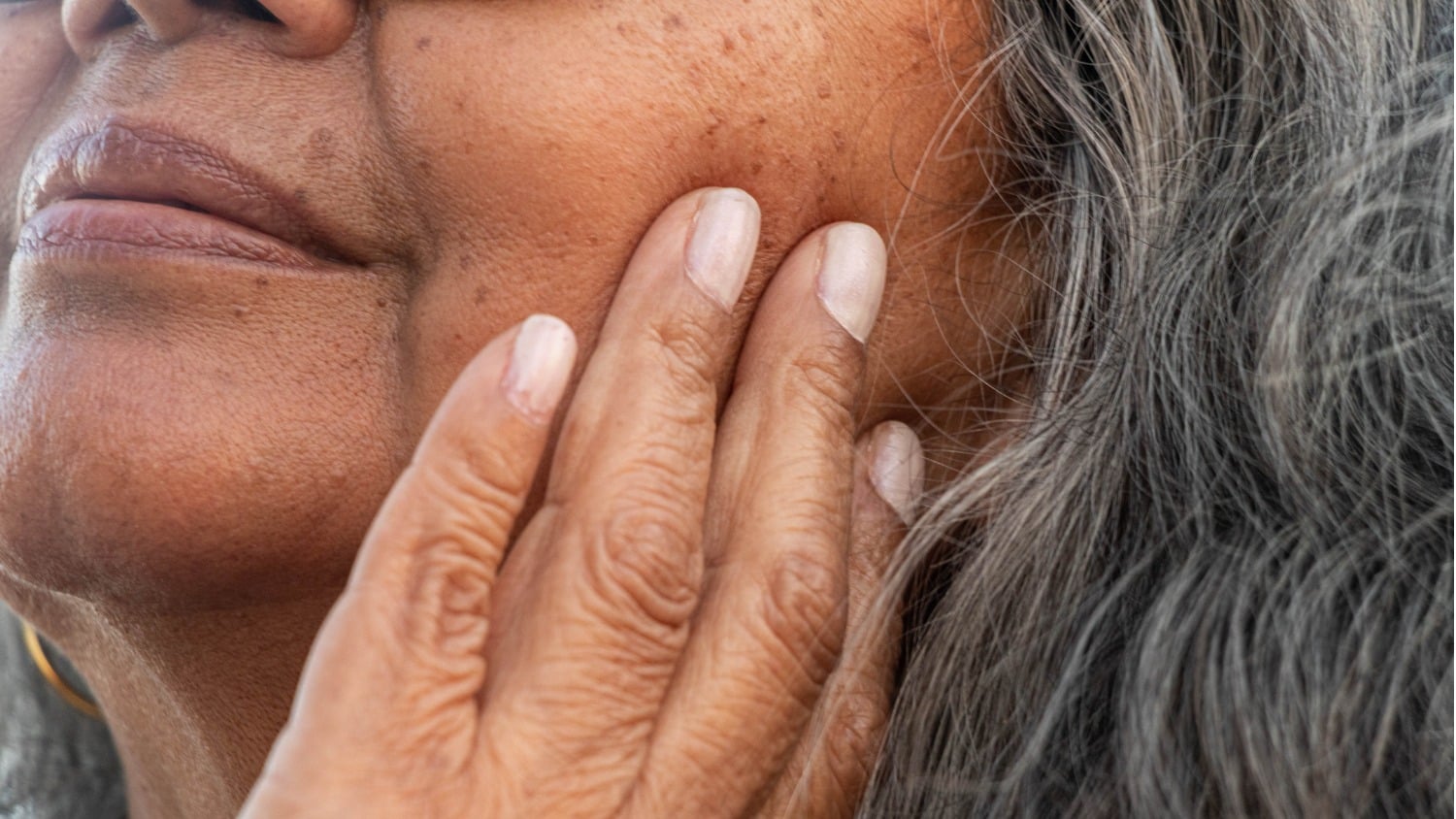[ad_1]
Most of us associate aging with the physical signs of growing older, such as wrinkles, graying hair, and a slower pace, but aging is much more than outward appearances. It involves a series of complex biological processes known as the Hallmarks of Aging.
These hallmarks represent the key mechanisms that drive the aging process. Before 2023, there were nine recognized hallmarks, but advancements in research have expanded the list to 12. Here I’ll explore each hallmark and what can be done to reduce its effects.
1. Cellular Senescence
Over time, damaged cells lose their ability to divide but do not die. These so-called “zombie cells” linger in the body, releasing harmful signals that contribute to tissue dysfunction and inflammation.
What you can do: Focus on regular exercise, a balanced diet, and stress reduction. Some foods such as capers, apples, broccoli, and berries are rich in molecules that may have “senolytic” activity, meaning they can help our bodies clear senescent cells.
2. Mitochondrial Dysfunction
Mitochondria, the energy powerhouses of cells, become less efficient with age, leading to reduced energy production and increased oxidative stress.
What you can do: Your mitochondria are like tiny engines, so give them premium fuel and take them out for a spin on a regular basis. Consume nutrient-rich foods high in omega-3 fatty acids, such as salmon and chia seeds. Regular physical activity is one of the most effective ways to support mitochondrial health.
3. Stem Cell Exhaustion
Stem cells, which replenish damaged or aging tissues, lose their regenerative capacity as we age.
What you can do: Engage in activities that promote overall health, such as exercise and a nutrient-dense diet. Sound familiar? There’s a reason for it. Your stem cells are like the ultimate multitaskers – help them out by reducing their workload with a healthy lifestyle.
4. Altered Intercellular Communication
As we age, cells communicate less effectively, leading to hormonal imbalances, chronic inflammation and impaired tissue repair.
What you can do: Maintain an anti-inflammatory diet, prioritize sleep and stress management. Get your hormones checked if you are experiencing symptoms.

5. Chronic Inflammation (“Inflammaging”)
Low-grade, chronic inflammation develops with age, resulting in an increase in cytokines and chemokines. This phenomenon known as “inflammaging” is thought to be a key driver of many age-related conditions like cardiovascular disease and neurodegeneration as well as the increasing rates of autoimmune disorders afflicting many middle-aged adults.
What you can do: Again, follow an anti-inflammatory diet rich in fatty fish, leafy greens, and ginger. Regular exercise, reducing alcohol consumption, and avoiding smoking can also decrease inflammation. Picture it as turning off that annoying fire alarm that’s been going off for no reason.
6. Dysbiosis
An imbalance in the gut microbiome can contribute to inflammation, reduced immunity, and metabolic disorders.
What you can do: Your gut is like a bustling city – keep the good bacteria thriving, and they’ll keep everything running smoothly. Avoid highly processed foods and incorporate probiotic-rich foods like yogurt and fermented vegetables and consume a fiber-rich diet to support gut health.
7. Genomic Instability
Accumulated damage to DNA over time contributes to aging and age-related diseases.
What you can do: Limit exposure to environmental toxins, wear sunscreen, eat antioxidant-rich foods like blueberries, and avoid smoking to protect your DNA. Think of it as proofreading your genetic manuscript – no typos allowed.

8. Telomere Attrition
Telomeres, the protective caps at the ends of chromosomes, shorten with each cell division. When they become too short, cells stop dividing, contributing to aging.
What you can do: Treat your telomeres like the tips of your shoelaces – don’t let them fray. Regular exercise, stress reduction, and a diet rich in walnuts, green tea, and avocados may help preserve telomere length.
9. Epigenetic Alterations
Changes in how genes are expressed can disrupt normal cellular function and contribute to aging.
What you can do: Adopt a healthy lifestyle, including a balanced diet, regular exercise, and adequate sleep. Foods like broccoli, turmeric, and berries may support positive epigenetic changes. Think of your genes as scripts for a play – a healthy lifestyle keeps the story compelling.
10. Loss of Proteostasis
The body’s ability to maintain properly folded and functional proteins declines with age, leading to the accumulation of damaged proteins. This is thought to be one of the key drivers of Alzheimer’s disease and dementia.
What you can do: Help your cells! Marie Kondo those misfolded proteins – if it doesn’t spark joy, it’s out. Consume foods rich in antioxidants and stay hydrated to support cellular protein maintenance.
The good news? Emerging therapies may target proteostasis in the future.
11. Disabled Macroautophagy
Macroautophagy, the process by which cells clear out damaged components, becomes less efficient with age, contributing to cellular dysfunction.
What you can do: Regular exercise can enhance this cellular cleanup process in your muscles. Think of it as your body’s recycling program – don’t let the bins overflow.
Intermittent fasting may be an effective way to boost autophagy, although simply reducing calories can also be enough to do the trick!

12. Deregulated Nutrient-Sensing
Pathways that regulate energy and nutrient levels in the body, such as insulin signaling, become less effective, contributing to metabolic disorders and aging.
What you can do: Follow a balanced diet and avoid added sugars whenever possible. Maintaining a healthy weight and minimizing visceral adipose (“belly fat”) is particularly important for preserving your body’s nutrient-sensing mechanisms.
Prevention Is the Cornerstone of Healthy Aging
While aging is inevitable, many age-related diseases can be delayed or minimized through lifestyle modifications, regular screenings, and proactive health management. Prevention focuses on modifying risk factors early, enhancing healthspan – the number of years lived in good health.
We can enjoy a life full of growth and exploration by embracing a proactive approach to health.
Embracing Aging
Ultimately, aging is not just about the passage of time but about the experiences and growth that come with it. By understanding the 12 hallmarks of aging and adopting intentional habits, we can transform aging from a process of decline into one of enrichment and discovery.
Let’s Have a Conversation:
What’s one health or wellness change you’ve made that has had a big impact? Are there any longevity practices that you swear by? How do you balance staying healthy with enjoying life?
[ad_2]
Source link












